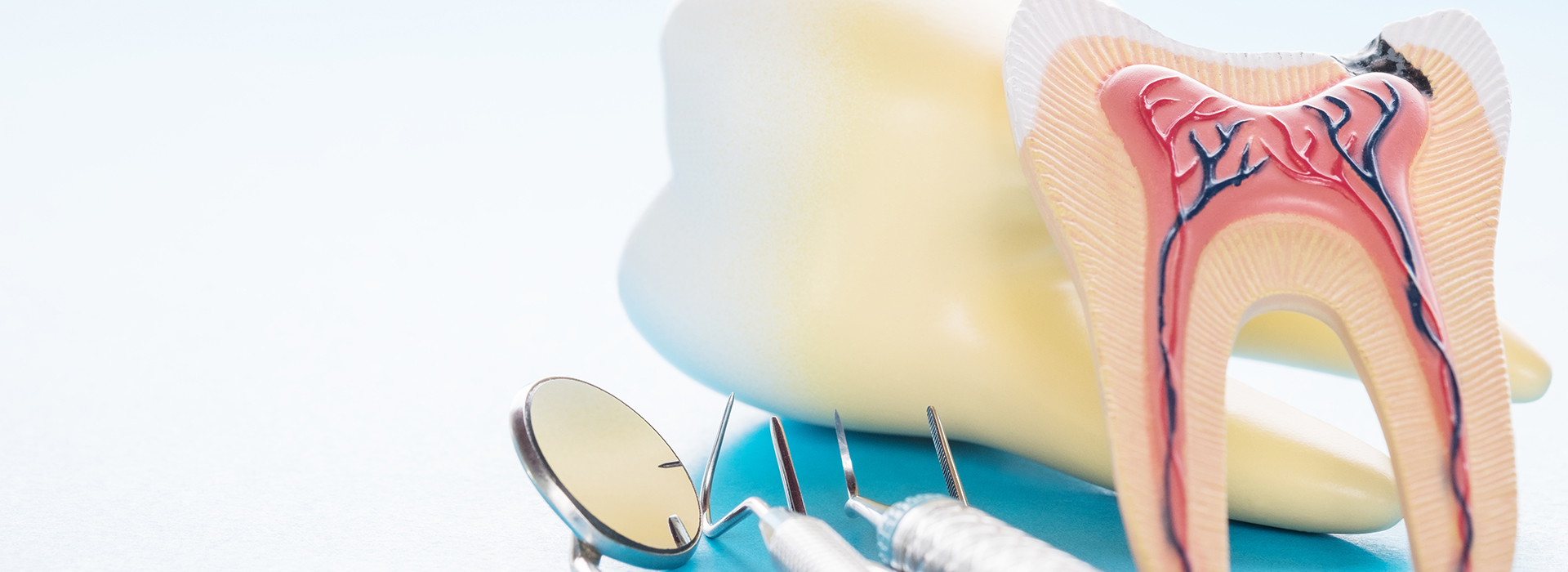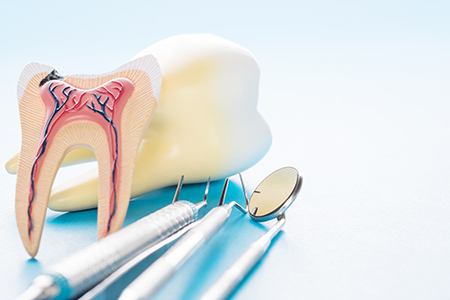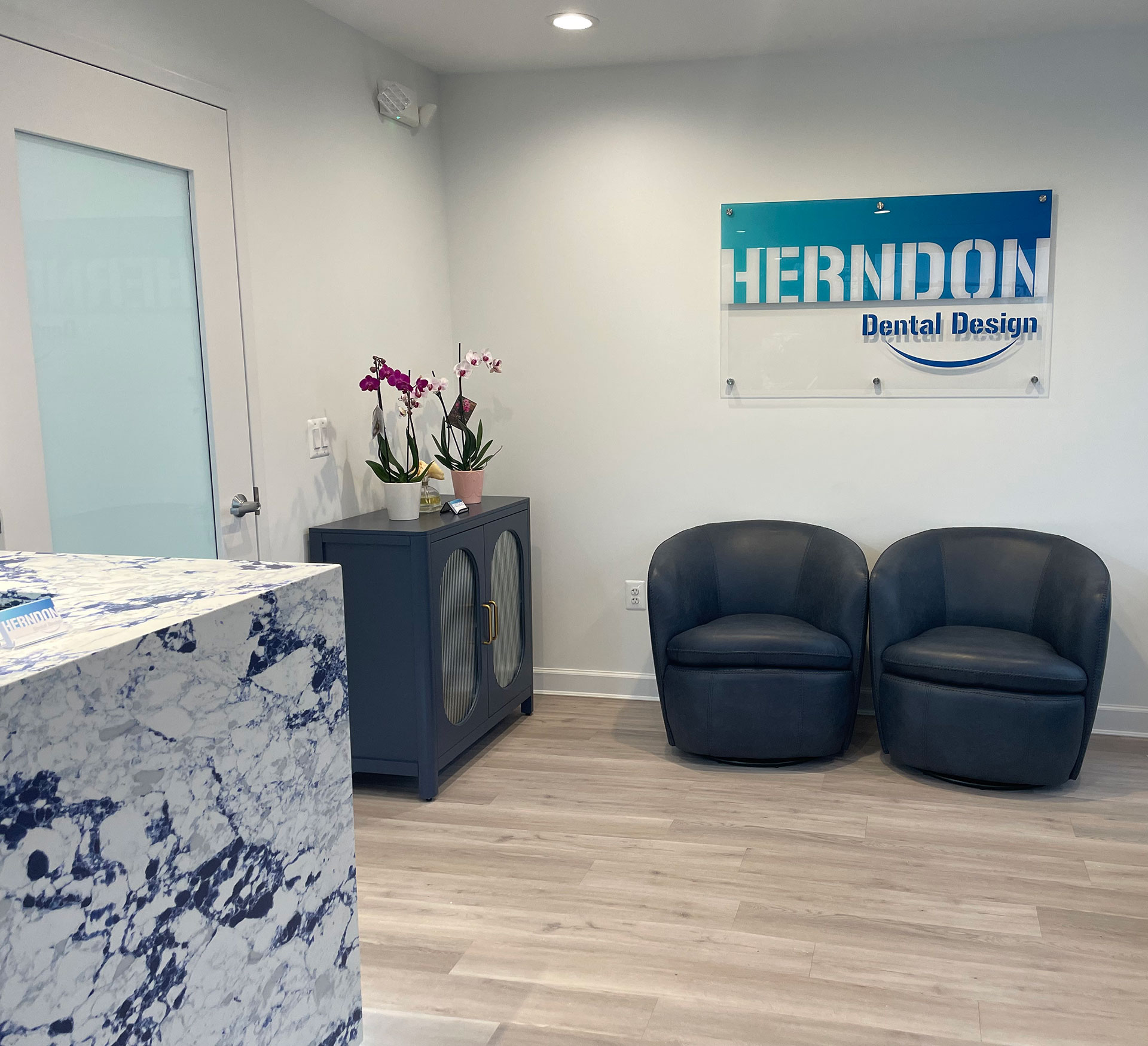

If you've been told that you need a root canal procedure, it's natural to feel concerned. However, there's no reason to worry. Today, root canals are routine procedures that can effectively relieve toothache pain and save damaged teeth. At Herndon Dental Design, we use the latest technology to provide precise, gentle care, ensuring your comfort throughout the process.
Our experienced team, led by Dr. Jae M. Chong and Dr. Gianandrea Wotfe, is dedicated to helping patients maintain healthy, beautiful smiles. With over 20 years of experience between them, they have the expertise to handle even the most complex root canal cases.
A root canal procedure involves removing the damaged or infected pulp (the soft tissue inside your tooth) and cleaning the interior of the tooth. This helps to relieve pain and prevent further damage or infection. Despite their reputation, modern root canals are no more painful than getting a filling.
Root canals have a high success rate, with over 90% of procedures resulting in fully functional teeth that last for many years. However, it's important to know that a tooth undergoing a root canal will need a permanent restoration, such as a crown, after the procedure to protect and strengthen it.

A tooth may need a root canal when the dental pulp becomes irreversibly damaged or infected. This can happen due to deep decay, repeated dental procedures on the same tooth, or trauma to the face or jaw. Some signs that you might need a root canal include:
A lingering pain in your tooth is often a sign of infection or damage to the pulp.
If hot or cold foods and drinks cause sudden, sharp pain, it could indicate that the pulp is inflamed or infected.
Infection in the pulp can cause swelling around the tooth and gums, as well as tenderness in the nearby lymph nodes.
A darkening or discoloration of the tooth may indicate that the pulp has died or become infected.
A pimple-like bump on your gum could be a sign of an infection that needs to be drained and treated with a root canal.

If you experience any of the above symptoms, it's important to seek dental care as soon as possible. Delaying treatment can allow the infection to spread, leading to more serious complications and potentially requiring more extensive (and expensive) treatment.
Even if you're not experiencing pain or other symptoms, a tooth may still need a root canal. During routine exams, our dentists may discover signs of damage or infection that require root canal therapy.
A root canal procedure typically involves one to three visits to our office. Here's what you can expect during the process:
First, we'll administer a local anesthetic to numb the area around the tooth. We may also offer additional sedation options if you're feeling anxious.
A small hole is made in the top of the tooth to access the inner chamber where the pulp is located.
Using special instruments, we'll remove the damaged or infected pulp from the interior of the tooth. We'll also clean and shape the root canals to prepare them for filling.
The cleaned and shaped canals are filled with a biocompatible material called gutta-percha, which seals the interior of the tooth and prevents further infection.
A temporary filling is placed in the access hole to seal the tooth until a permanent restoration can be placed. In some cases, we may place a crown on the tooth immediately after the root canal procedure.

After your root canal procedure, it's important to take good care of your tooth to ensure its long-term success. Here are some tips for post-operative care:
Until a permanent restoration is placed, avoid chewing on the treated tooth to prevent further damage or fracture.
If we prescribe antibiotics or pain medication, make sure to take them as directed to help prevent infection and manage any post-operative discomfort.
Continue brushing and flossing regularly to keep your teeth and gums healthy. This will also help prevent further problems with the treated tooth.
Regular dental exams and cleanings are essential for maintaining good oral health and monitoring the success of your root canal treatment.
After your root canal, it's crucial to restore the tooth with a permanent crown or other restoration to protect it from further damage and ensure its full functionality. Without proper restoration, the tooth is at a higher risk of breaking or becoming reinfected. Your dentist will discuss the best restoration options for your specific needs.
With proper care, a tooth that has undergone root canal therapy can last a lifetime. If you have any questions or concerns about your root canal procedure or post-operative care, please don't hesitate to contact our office for assistance.

A root canal procedure is the best way to save a tooth that has been damaged by decay or injury and preserve your natural smile. The alternative is an extraction and treatment to replace the tooth. While at times a tooth is non-restorable and an extraction is the only option, when possible, it’s best to try and save your natural tooth. With proper care, a tooth with root canal therapy can serve your smile well for many years to come.
Despite lingering myths from before the age of modern dental anesthesia and technology, having a root canal procedure today is as routine and comfortable as visiting the dentist for a filling. While the procedure is performed under local anesthesia with your tooth completely numbed, we can also discuss options in dental sedation.
Whether the symptoms of a dental infection subside after a course of antibiotics, a draining abscess provides you with some temporary pain relief, or a tooth with radiographic evidence of pathology has not yet developed symptoms, it’s essential, before an infection worsens or occurs, to have a root canal procedure performed. In this way, the tooth can be disinfected, filled, and sealed to protect your health and avoid further problems.
If you have sustained a dental injury, have a toothache, jaw pain, swelling, or are experiencing any other unusual and uncomfortable oral symptoms, contact our office immediately for care. Dental problems that have not been evaluated and treated can significantly worsen, producing more severe damage and consequences for the involved teeth, your oral health, and even your overall wellbeing. Once you get in touch with our office, our friendly and compassionate office team will get you in for care at your earliest convenience.
While some root canal procedures can be completed in one visit, others may involve 2 or 3 appointments. How long it takes depends on various factors, including active infection, the number of canals in the tooth, and the tooth’s location or anatomy.
With a success rate that exceeds 95%, root canal therapy remains the most effective procedure to save a tooth in which the inner vital tissues have been damaged. However, as with all healthcare procedures, there are a small percentage of cases where the teeth become symptomatic a second time. The good news is that many of these teeth can still be saved with root canal retreatment or a minor surgical procedure known as an apicoectomy.
The best ways to maintain a tooth with root canal therapy are to get the proper restoration required to rebuild and protect the tooth, maintain proper oral hygiene, and schedule appointments for routine dental checkups and care.
Saving a tooth with root canal therapy is a wise investment that, in the long run, is typically less costly and invasive than having the tooth extracted and replaced with a fixed bridge or implant. As far as the exact cost of care, it can vary depending on which tooth is being treated. Many dental insurance plans provide coverage for root canal therapy. At the office of Herndon Dental Design, we do our best to optimize your dental benefits and minimize your out-of-pocket expenses. Our staff will answer all your questions about the cost of care and discuss all your payment options.
At the office of Herndon Dental Design, we use the latest technology and most effective methods of care to provide precise and gentle care. Our reputation for excellence is based upon a consistent record of achieving successful treatment outcomes while providing prompt, stress-free, and convenient treatment for every type of dental need.

Ready to schedule your next dental appointment or have questions about our services?
Whether you need to schedule an appointment, discuss payment options, or have questions about your treatment, our friendly team is here to help. Reach out today, and we’ll be happy to assist you!